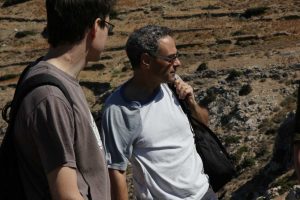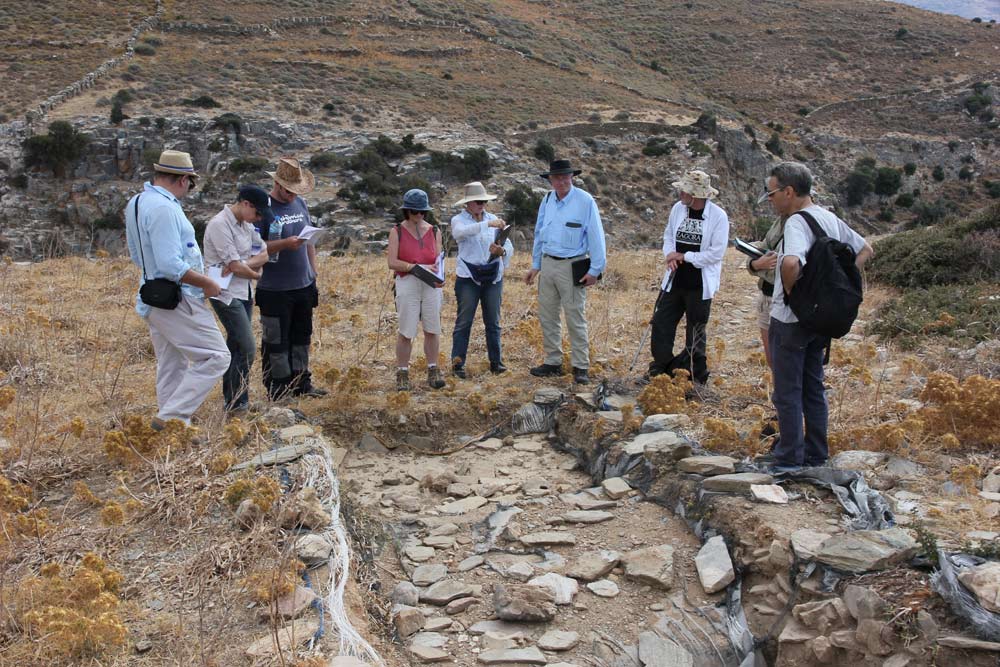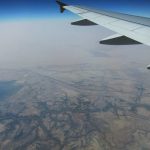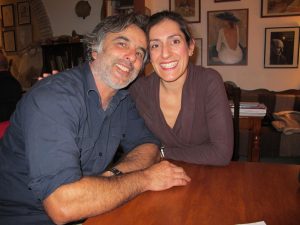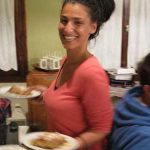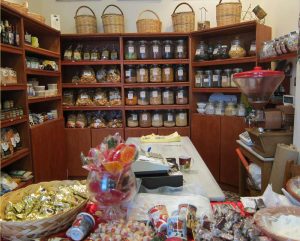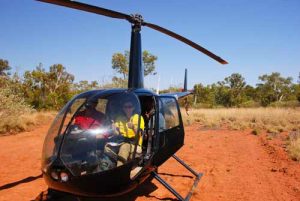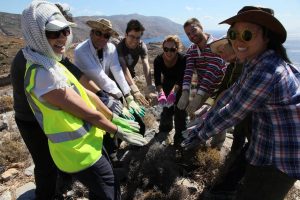
Yesterday, the first day of the 2013 Zagora fieldwork season, after the morning induction of the newbies, I decided to work at excavation area 5. My Powerhouse Museum colleague, Paul Donnelly, is the supervisor of that trench area, which is covered with rocks large and small. Lots and lots of rocks. And they’re almost all grey marble – which is about as heavy as rocks get. Paul decided this called for a chain gang approach, to pass the rocks down the slope and to create a spoil heap with the rocks removed from the trench area.
As each of his team members for this first day (the trench teams are not yet confirmed) brought out their gloves, I was amazed to find the high design element in most of the gloves. There were pink gloves, turquoise gloves, lime and blue. This screamed out ‘photo opportunity’. (Secretly, I’ll be watching out to see how their stylish gloves fare through the season compared with my drab but very sturdy grey workman’s gloves which I used last year and still have plenty of life in them yet.) Click the image at right for a closer view.
The first phase of work in this Zagora archaeological fieldwork season requires a lot of hard yakka (that’s Australian slang for ‘hard work’), including trench clearing and backfill and vegetation removal. That’s what most of the team was doing in the five excavation areas yesterday, the first day of the 2013 season.
The Zagora team leaders provide all the tools for excavation work except for a few personal items which we provide for ourselves: archaeological trowels, work gloves, anti-dust goggles and any extras some of us use, such as knee pads.
